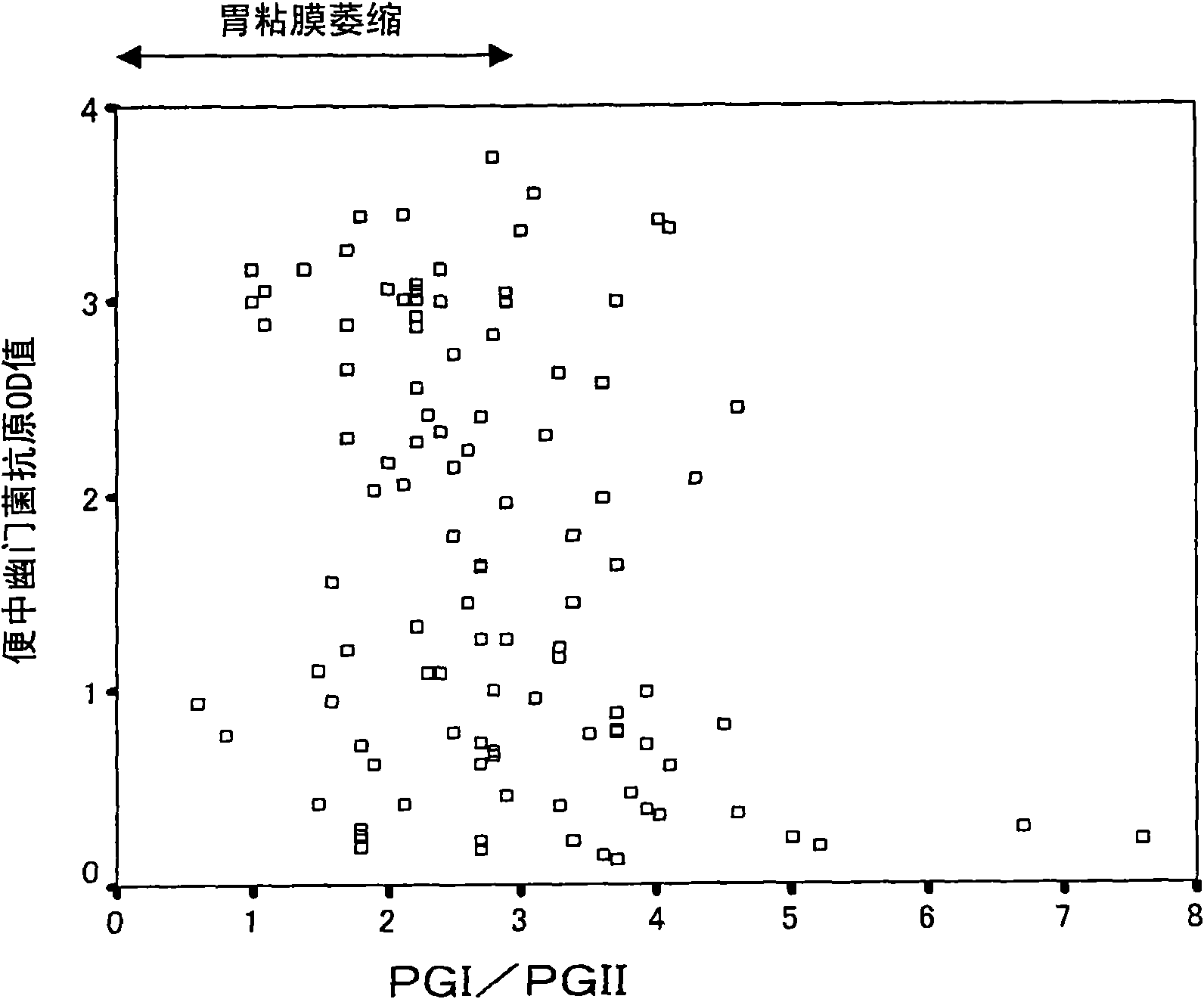Method for evaluating gastric mucosal state by quantifying helicobacter pylori antigen in feces
A technology for the quantitative determination of Helicobacter pylori, applied in measuring devices, disease diagnosis, instruments, etc., can solve the problems of many missed cases, heavy burden on subjects, and inapplicability of initial screening, etc., and achieve the effect of reducing the burden
- Summary
- Abstract
- Description
- Claims
- Application Information
AI Technical Summary
Problems solved by technology
Method used
Image
Examples
Embodiment 1
[0091] Taking 104 healthy people (36 males and 68 females) who were positive for Helicobacter pylori as subjects, UBT (urea breath test), determination of Helicobacter pylori antigen in feces, pepsinogen (PG I and PG) in blood were performed. II) Concentration, measurement of anti-CagA antibody concentration in blood.
[0092] As for the measurement method, UBT (urea breath test) was performed using Ubit tablet (Otsuka Pharmaceutical Co., Ltd.), and the measurement of Helicobacter pylori antigen in feces was performed using "Testmate pylori antigen EIA". Among them, by the measurement of Helicobacter pylori antigen in feces, the OD value of 0.1 or more was judged as positive.
[0093] The number of people in each age group of the 104 subjects is shown in the table below.
[0094] Table 1
[0095] age
age group ratio
male
women
30-39 years old
12.5%
4 people
9 people
40-49 years old
40.4%
12 people
30 people ...
Embodiment 2
[0158] development of pylori-infected gastritis Figure 15 As shown, it typically evolves according to gastric antrum dominant gastritis, pangastric gastritis, and body dominant gastritis (gastric antrum dominant gastritis is a common type in Europeans and Americans, pangastric gastritis and body dominant gastritis are more than 40 years old) common type among Japanese). In order to clarify the relationship between the various stages of gastritis development and the OD value of Helicobacter pylori antigen in feces, 200 adults (94 males, 104 females, with an average age of 55 years (22-84 years)) were used as samples. For the subjects, in the same manner as in Example 1, the Helicobacter pylori antigen in the stool, the pepsinogen (PG I and PG II) concentration in the blood, and the anti-CagA antibody concentration in the blood were measured. In addition, based on endoscopic verification, judgment of atrophy boundary (Kimura Takemoto classification), intestinal metaplasia, and...
PUM
 Login to View More
Login to View More Abstract
Description
Claims
Application Information
 Login to View More
Login to View More - R&D
- Intellectual Property
- Life Sciences
- Materials
- Tech Scout
- Unparalleled Data Quality
- Higher Quality Content
- 60% Fewer Hallucinations
Browse by: Latest US Patents, China's latest patents, Technical Efficacy Thesaurus, Application Domain, Technology Topic, Popular Technical Reports.
© 2025 PatSnap. All rights reserved.Legal|Privacy policy|Modern Slavery Act Transparency Statement|Sitemap|About US| Contact US: help@patsnap.com



